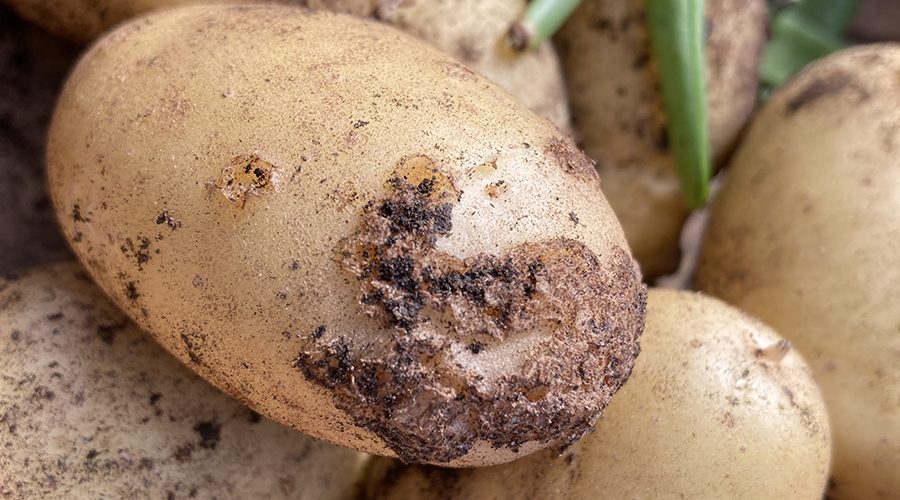Potatoes do not always look perfectly formed when you dig them up – in this article, we look at scab (pictured) and a few other things that you may encounter over the next few weeks.
Scab
This bacteria-driven disease causes “scabby” rough patches on the skin of potato tubers and often occurs in hot, dry summers. It can be avoided by watering regularly and thoroughly. It’s not a major problem and you can scrape or peel the tubers before cooking to enjoy your crop anyway.
Black leg
If you see stems turning black on your potatoes then it is likely to be black leg, a bacterial disease that strikes during damp weather. It’s easily confused with blight as the leaves start to turn yellow as well. Look for leaf curling and lack of brown spots to distinguish it from blight.
Slugs
Yep, sadly slugs will have a good old munch through your potatoes without you even realising they’ve done it until you dig them up! Try to keep on top of slugs by setting beer traps etc, and if you have a slug-infested garden then dig the potatoes up as soon as they are ready rather than leaving them in the ground.
 Blight
Blight
Check your potato plants regularly for brown patches on the leaves. This is the first sign that they have blight, a fungal spore-driven disease. If it’s more advanced, you may see brown patches on the stems as well, and the leaves will have started to rot. Remove affected foliage and get rid of it (burning it is best). Then, try removing a few more of the leaves to allow air to circulate better between plants. Keep an eye on things and with any luck you may have got it under control before it got too bad! If the crop is badly affected, cut off all the foliage at the base of the stems. You can leave the potato tubers in the ground for two weeks to let the potato skins harden and then dig them up.
Magnesium Deficiency
Magnesium deficiency in potato plants can start in a similar way to blight, with brown patches although it tends to be more spotty in appearance at first, and the leaves will take on a yellow hue. It’s often seen during dry spells, as the plants aren’t getting enough water in order to draw up the key nutrients from the soil. If you start to notice yellowing and brown patches, it’s a good idea to rule out magnesium deficiency by thoroughly watering your potato plants and giving them a feed to see if they begin to recover (magnesium deficiency) or continue to develop brown patches (blight)
Potatoes fall apart when cooked
This is usually a sign that they have not had enough water during the growing season. The potatoes turn to mush when boiled, which is quite frustrating if they are salad potatoes or new potatoes. If they are really bad, try steaming them instead and then you can always mash them if they still fall apart. Another good way to cook them is to roast them (without par-boiling.)

